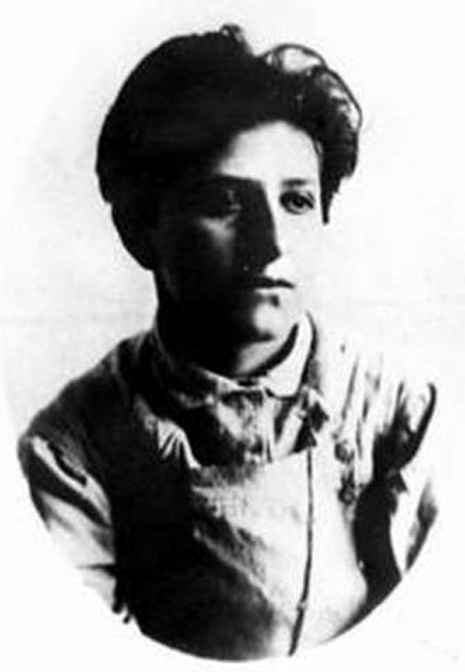
This is a guest post by Zoetica Ebb, a Moscow-born, LA-based artist, writer, photographer and style technician. Follow her on Twitter @zoetica.
Read Part I of Ghosts of the Moscow Kremlin.
Fanny Kaplan lived her turbulent life in the early 20th century. A young Jewish anarchist in Kiev, she partially lost her sight at the age of twenty, during preparations for a terrorist action, when explosives accidentally detonated. Arrested while trying to flee the scene, she was sentenced to death. Because Fanny was under twenty-one, she was sent to a labor camp instead, where she spent most of her time in ill physical and mental health, eventually losing her vision entirely.
When the Revolution of 1917 came, she was released. Free again, Fanny underwent a series of treatments and her vision partially returned. She joined an anti-Marxist socialist party and, one year later, was arrested for the attempted assassination of Lenin, who was shot three times at a large-scale meeting. In a considerably shady turn of events, she was captured by the militia holding a gun and saying, “I did my duty.”
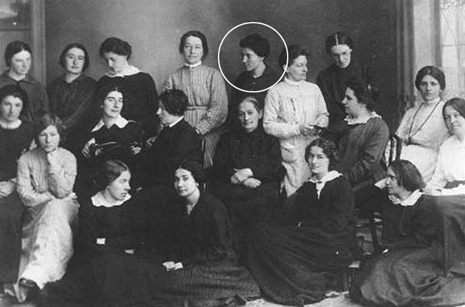
Considering Fanny’s impaired vision -at this time she could only make out shadowy shapes- and the fact that the well-aimed bullets weren’t extracted from Lenin to be checked for a match to her pistol, this confession was dubious (also see: Lee Harvey Oswald). Nonetheless, since she wouldn’t name any accomplices, Fanny Kaplan was executed at the Kremlin without a trial or an investigation three days later. She was shot and stuffed in a barrel, which was then set ablaze, leaving no room for confusion in least in one aspect of her story, making her a perfect candidate for eternal unrest.
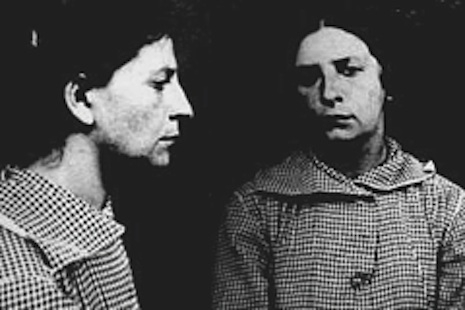
A pale, trembling Fanny with uncombed hair and a gun is sometimes seen inside one of the Kremlin towers to this day.
Vladimir Ilyich Lenin remains an iconic figure in Russian history, though national reverence and enthusiasm have waned since the fall of Communism. As someone who grew up during Communism’s final decade, I still find Lenin difficult to write about, since the shiny dogma we were taught in school and the details surfacing over the past twenty years are at considerable odds. Even so, his accomplishments are many and his work ethic alone is awe-inspiring, even if all of his ideals and doings were not.

He was the erudite revolutionary who fought the Great Civil War, helped overthrow the last tzar and built an entirely new government, transforming Russia into a Soviet State with a socialist economic system. He worked sixteen-hour days until his death, wrote entire books without the help of a stenographer, all the while managing to maintain communication with friends and allies. His pamphlets, reforms, and long, impassioned speeches before huge crowds made him into a national hero. Despite being a slight man with unremarkable looks, the propaganda spun by Lenin’s eventual successor, Joseph Stalin, inflated his newly broad-shouldered and strong-jawed image to near-leviathan proportions. After decades of his trademark hostile intolerance toward faith, which dubbed religion “a mass opiate to be eradicated”, Lenin became god. Stalin continued to cultivate this personality cult to legitimize himself during and well after Lenin’s lifetime.
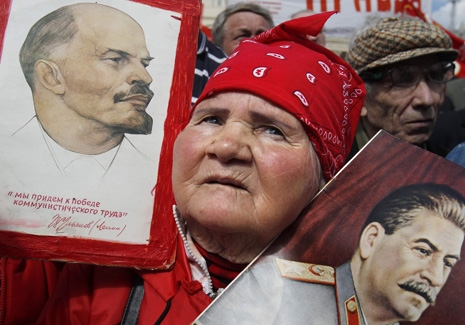
Before he eventually worked himself to death in 1924, Lenin fell gravely ill, and, partially paralyzed, was ordered rest at his summer house outside of Moscow. Shortly before his end, a Kremlin security chief saw what appeared to be Lenin walking briskly through the corridor up to his former apartment on the premises. Confused by Lenin’s lack of cane and entourage, the chief made a call – only to confirm that Lenin was at the summer house, resting as prescribed. Numerous similar eyewitness accounts followed, in direct opposition with the anti-spiritual doctrine of the times. The matter was quickly covered up with a false story of Lenin visiting Moscow one last time.
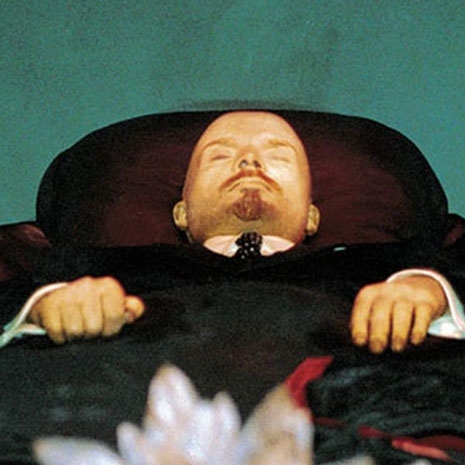
After his death three weeks later, Lenin’s body was embalmed and displayed in the Kremlin Mausoleum, per Stalin’s orders, where it lies to this day, accumulating layers of mortician’s wax with each passing year. Lenin’s baths and maintenance are no longer funded by the government, but continue thanks to public donations. It’s been speculated that it’s this unnatural process that keeps Lenin’s troubled spirit trapped within his Kremlin apartment, which has been locked and sealed for decades. Sounds of restless pacing, shuffling paper and creaking furniture are heard by guards late into the night.
Joseph Vissarionovich Stalin fought alongside Lenin and other Bolshevik revolutionaries during the 1917 revolts, and later worked beside him as General Secretary. He escalated his reach and accumulated power until Lenin’s death, upon which he seized control of Russia. Obsessed with the idea of Russia as an industrial giant, he rapidly and violently transformed the formerly agrarian society. Millions were sent to labor camps, millions more were deported and exiled. The total of deaths under Stalin’s rule rounds out at a minimum of twenty million. The very definition of a despot, Stalin and his reign of terror contributed to a year-long famine and brought about the Great Purge.

The Purge was a paranoid rush of inconceivable violence that rid the Communist Party of noncompliant officials and positioned large-scale police surveillance and raids on potential rebels, so-called “dangerous ethnic minorities” and “saboteurs”. It resulted in the execution of more than half a million citizens accused of treason. Among Stalin’s victims were members of the elite and the intelligentsia, many of them Jews; Russia’s greatest poets, authors and artists who dared to speak out against him. They were kidnapped, driven to suicide, sent to labor camps where they usually died of exhaustion and famine, or executed alongside their families and associates.
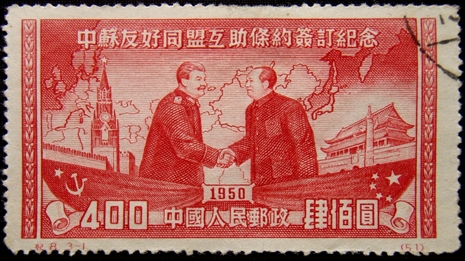
Further escalating this destruction, Stalin sent agents to Mongolia, where tens of thousands of innocents were executed for having supposed links to Japanese spy rings. Eighteen thousand Buddhist llamas were slaughtered during this process. Nobles, academics, politicians and civilians were murdered, too. Mass graves with hundreds of bodies of Buddhist monks and civilians have been discovered as recently as 2003.
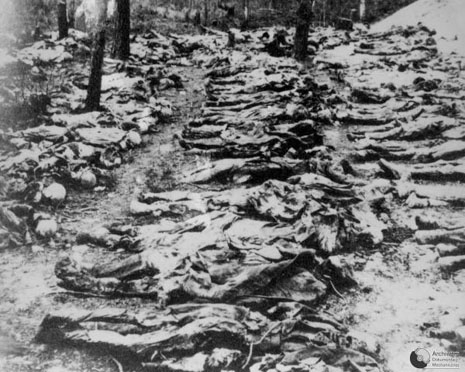
The Stalin years deserve a tome’s worth of text and I have to keep it brief, so I’ll just skip to the good part, where he dies of rat poison ingestion, soon after being found paralyzed and soaked in his own stale piss, likely dosed by his most heinous general, Lavrentiy Beria. Stalin was stuffed and mounted like comrade Lenin, but later buried in the Kremlin Wall Necropolis, well out of sight.
Side note: my childhood pet bull-terrier was named after the aforementioned general because of the undeniable resemblance:
_465_202_int.jpg)
Apparently, Stalin is still trying to establish order in the Motherland, lurking in the Kremlin corridors as its most frequent and persistent ghost. It’s said that rooms get ice-cold during his visits and a faint stench of urine wafts through the chilled air.
WOOSH.
Read Part I of Ghosts of the Moscow Kremlin.
This is a guest post by Zoetica Ebb, a Moscow-born, LA-based artist, writer, photographer and style technician. Follow her on Twitter @zoetica.